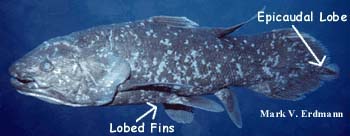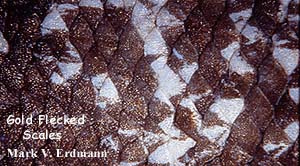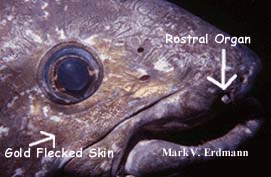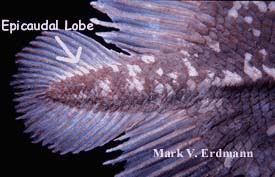Why all the fuss?
The fascination scientists and the general public have with coelacanths is likely caused by their
unusual appearance, their evolutionary importance, and the fact that they have remained virtually unchanged
morphologically for millions of years, leading some to refer to them as "living fossils".
A unique combination of morphological features suggest that the coelacanth lineage is close to the
origin of the evolution of early terrestrial, four-legged animals (tetrapods) like amphibians. The most remarkable of these
features is the presence of seven lobed fins, unique among the living fishes. The paired fins
move in an alternating fashion which resembles a horse in a slow trot. Other interesting features
include a small secondary "epicaudal" lobe on its tail, an oil-filled notochord instead of a backbone,
an intercranial joint which is thought to allow them to widen their gape when capturing prey, and a unique
electrosensory rostral organ that may be used to detect prey.
While their morphological features lead many scientists to believe the coelacanth lineage was the
direct link to tetrapods, recent molecular evidence suggests that lung fish might be more closely
related to tetrapods.











